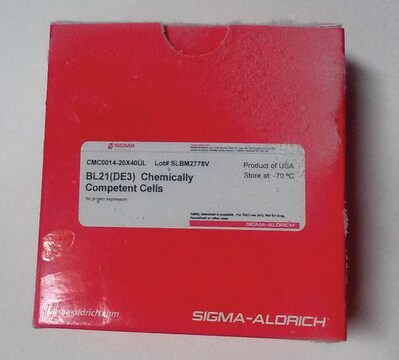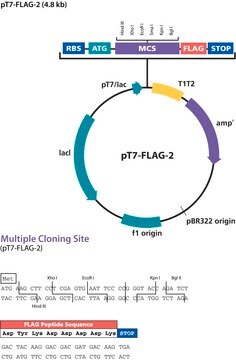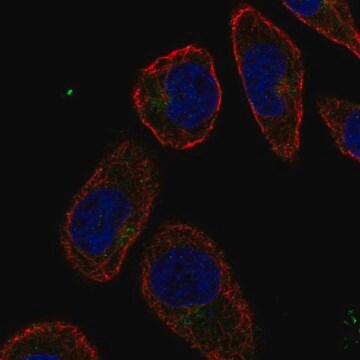CMC0021
OverExpress™ C41(DE3) Electrocompetent Cells
Escherichia coli, rod shaped
About This Item
Empfohlene Produkte
product name
OverExpress™ C41(DE3) Electrocompetent Cells, for the highest protein expression
Biologische Quelle
Escherichia coli
Qualität
for molecular biology
Wachstumsmodus
adherent or suspension
Morphologie
rod shaped
Methode(n)
microbiological culture: suitable
Zelltransformation
competent cell type: electrocompetent
transformation efficiency: ≥1 x 109 cfu/μg
Versandbedingung
dry ice
Lagertemp.
−70°C
Allgemeine Beschreibung
Genotype
F – ompT hsdSB (rB- mB-) gal dcm (DE3)
Leistungsmerkmale und Vorteile
- Express genes cloned into any T7 vector with these BL21(DE3) derivatives
- Effective in expressing toxic & membrane proteins
- Cited in over 350 research articles
Komponenten
- OverExpress C41(DE3) electrocompetent cells
- pUC 19 transformation control DNA
- recovery medium for expression
Rechtliche Hinweise
Ähnliches Produkt
Lagerklassenschlüssel
10 - Combustible liquids
Analysenzertifikate (COA)
Suchen Sie nach Analysenzertifikate (COA), indem Sie die Lot-/Chargennummer des Produkts eingeben. Lot- und Chargennummern sind auf dem Produktetikett hinter den Wörtern ‘Lot’ oder ‘Batch’ (Lot oder Charge) zu finden.
Besitzen Sie dieses Produkt bereits?
In der Dokumentenbibliothek finden Sie die Dokumentation zu den Produkten, die Sie kürzlich erworben haben.
Artikel
Bacterial transformation is a process of horizontal gene transfer by which some bacteria take up foreign genetic material (naked DNA) from the environment. Bacteria that can take up free, extracellular genetic material are known as competent cells.
Protokolle
OverExpress™ Electrocompetent Cells are provided in 25 μL aliquots, sufficient for one transformation reaction.
Unser Team von Wissenschaftlern verfügt über Erfahrung in allen Forschungsbereichen einschließlich Life Science, Materialwissenschaften, chemischer Synthese, Chromatographie, Analytik und vielen mehr..
Setzen Sie sich mit dem technischen Dienst in Verbindung.








